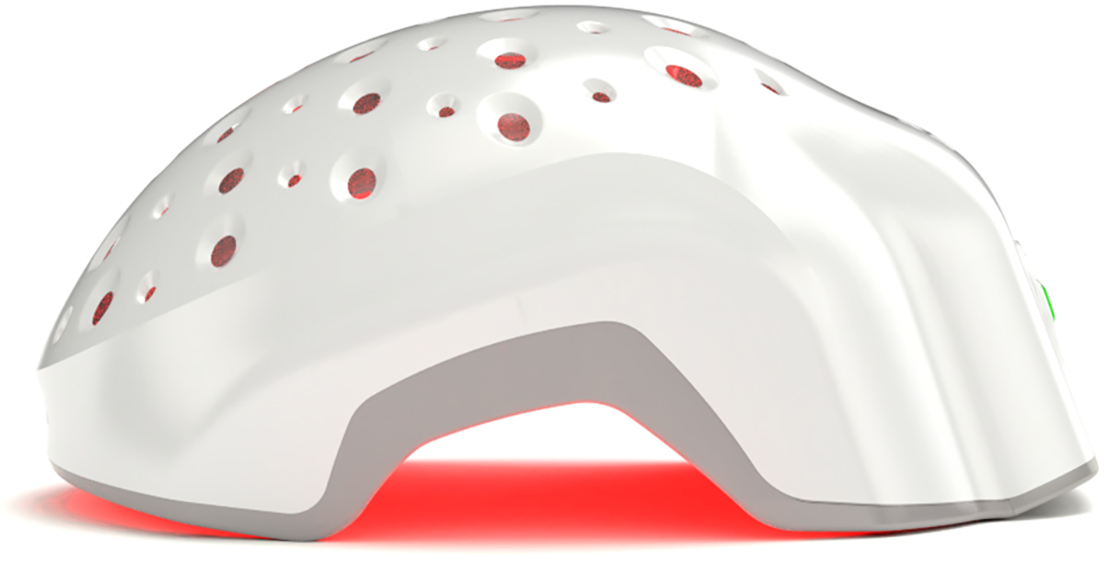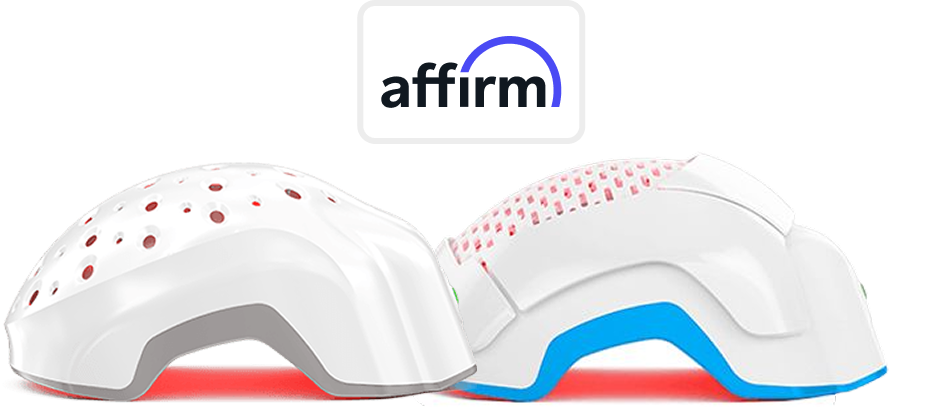Hair salons have been selling this promise for years—"Come in for a trim, and your hair will grow faster!"
Sounds nice, doesn’t it?
Like a magical shortcut to long, flowing locks. But cutting hair doesn’t make it grow any faster. Your hair grows from the roots, not the ends, which means no amount of snipping will send a signal to your scalp to speed things up.
So, why does this myth refuse to die?
Probably because freshly trimmed hair looks and feels healthier, fuller, and thicker, creating the illusion of faster growth. Meanwhile, neglecting trims can lead to split ends, breakage, and thinning—making it seem like your hair has stopped growing altogether. See the trap?
That said, don’t ditch your trims just yet. While they won’t speed up the growth rate, they will help prevent damage, keep your hair strong, and make the length you do have look its best. And if you’re serious about growing your hair longer and stronger, you’ll want to focus on the real factors that affect hair growth—things like nutrition, scalp health, and the science-backed ways to support your follicles.
So, does trimming hair make it grow faster? No. But does it play a key role in keeping your hair from breaking off before it even reaches its full potential? Absolutely.
Let’s break down the science behind hair growth, why trims still matter, and what actually works if you want to speed things up.
The Truth about Hair Growth Myths: Why Trimming Won’t Speed Things Up
Hair growth myths are everywhere, and the idea that trimming your hair makes it grow faster is one of the most persistent. But here’s the deal—your hair grows from the roots, not the ends. Cutting the tips has zero impact on what’s happening at the scalp level, where actual growth takes place. So, no, trimming won’t send your follicles into overdrive.
That being said, there’s a reason why this myth refuses to die. When you regularly trim split ends, your hair looks healthier, thicker, and stronger. Without trims, split ends travel up the hair shaft, leading to breakage that makes it seem like your hair isn’t growing. The reality is… your hair is growing at its usual pace—you’re just losing length to damage.
So while a trim won’t magically boost growth, it will prevent damage that could make your hair appear shorter and thinner over time. And that’s a good enough reason to keep your hair maintenance in check.
The Benefits of Regular Hair Trims: Why They Still Matter
Just because trims don’t speed up growth doesn’t mean you should skip them. Think of trimming like routine maintenance—it keeps your hair strong and prevents small problems from turning into big ones.
1. Prevents Split Ends from Wreaking Havoc
Split ends are like a slow-moving disaster for your hair—ignore them long enough, and they’ll turn your sleek strands into a frizzy, brittle mess. Once the protective cuticle is compromised, the split doesn’t just sit there looking harmless—it travels upward, weakening the entire strand. The result is unruly, frizzy hair that refuses to behave, no matter how much conditioner you drown it in. And here’s the thing—there’s no reversing split ends. The only fix is trimming them off before they turn your ends into a wiry, tangled nightmare
2. Reduces Breakage for Fuller-Looking Hair
Ever feel like your hair isn’t getting longer? Breakage could be the culprit. Brittle, damaged strands snap off before they reach their full potential, making growth seem stagnant. Trims help maintain stronger, more resilient hair.
3. Keeps Your Hair Manageable and Tangle-Free
Knots and tangles aren’t just annoying—they contribute to breakage. When your ends are smooth and healthy, brushing is easier, and you lose fewer strands to mechanical damage.
4. Helps Hairstyles Hold Their Shape
Even if you’re growing your hair out, shaping your ends keeps your style from looking frayed and unkempt. Whether you have layers, bangs, or a one-length cut, regular trims help maintain the integrity of your look.
How to Prevent Split Ends without Losing Length
\If trimming hair isn’t the secret to faster growth, protecting your strands from split ends is the next best thing. The goal is to preserve length by keeping your hair as healthy as possible between trims.
1. Use a Heat Protectant—Every Single Time
Heat styling zaps moisture from your hair and weakens the cuticle, making split ends more likely. If you can’t ditch the hot tools, at least protect your strands with a heat protectant spray before styling.
2. Don’t Brush Like You’re Fighting for Your Life
Aggressive brushing rips through tangles, causing unnecessary breakage. Wet hair is especially vulnerable since the strands are at their weakest when saturated with water. Instead, gently towel-dry your hair—no rough rubbing—before detangling. Use a wide-tooth comb or a detangling brush, starting at the ends and working your way up to the scalp to minimize stress on your strands.
3. Hydrate Like Your Hair Depends on It (Because It Does)
Dry, brittle hair is a breeding ground for split ends. Deep condition weekly and use a leave-in conditioner to keep moisture locked in.
4. Sleep on Silk, Not Cotton
Cotton pillowcases create friction, leading to frizz, tangles, and breakage. A silk or satin pillowcase reduces friction, helping you wake up with smoother, healthier hair.
5. Avoid Overwashing
Washing your hair daily strips it of its natural oils, leaving strands dry, fragile, and prone to splitting. Stick to 2-3 washes per week and opt for a gentle, sulfate-free shampoo.
How Often Should You Trim Your Hair?
There’s no one-size-fits-all answer to how often you should trim your hair, but your hair type, styling habits, and overall health play a role.
-
For long hair prone to damage: Every 8-12 weeks to keep ends fresh.
-
For short styles that need shaping: Every 4-6 weeks to maintain structure.
-
For curly or textured hair: Every 10-12 weeks, as curls are less prone to visible split ends.
- For chemically treated or heat-styled hair: Every 6-8 weeks to prevent breakage.
If you notice excessive tangling, fraying, or thinning ends, it’s time for a trim—regardless of the timeline.
The Best Hair Care Routine for Growth: What Actually Works?
Trims alone won’t get you longer hair. Healthy hair starts at the scalp, and what you put into your body matters as much as what you apply to your hair.
1. Scalp Health and Hair Growth Go Hand-in-Hand
A healthy scalp is the foundation of hair growth. Think of it as the soil where your hair "plants" grow—if it’s dry, clogged, or inflamed, your hair won’t thrive.
- Use a scalp scrub or gentle exfoliating shampoo to remove buildup.
-
Massage your scalp daily to boost blood flow and stimulate hair follicles.
- Avoid tight hairstyles that stress hair at the roots, leading to traction alopecia over time.
2. Foods That Promote Hair Growth
Hair is made of keratin, a protein that depends on the right nutrients to grow strong and healthy. Your diet should include:
-
Protein: Eggs, chicken, fish, lentils
-
Iron & Zinc: Spinach, red meat, chickpeas
-
Omega-3s: Salmon, walnuts, flaxseeds
-
Biotin & Vitamin B: Nuts, seeds, avocados
-
Vitamin D: Mushrooms, fortified dairy, sunlight exposure
Your body has priorities, and your hair isn’t at the top of the list. When nutritional deficiencies hit, your body redirects essential nutrients to more ‘important’ functions, leaving your hair last in line. This is why deficiencies often show up in your strands first—thinning, shedding, and slow growth are your scalp’s way of waving a red flag. If you want strong, resilient hair, you need to feed it from the inside out.
3. Natural Remedies for Hair Growth—What Works?
While there’s no miracle cure for instant hair growth, some natural ingredients can help strengthen hair and minimize shedding:
-
Rosemary oil: Some preliminary studies suggest it may support scalp circulation, which is essential for hair growth, but it’s not a replacement for clinically proven treatments.
-
Castor oil: Rich in fatty acids that help moisturize and strengthen strands.
-
Aloe vera: Soothes the scalp and reduces inflammation that can stunt hair growth.
Incorporating scalp massages with these oils can improve circulation and overall scalp health, supporting better growth over time.
Conclusion
So, does trimming hair make it grow faster? Nope. But does it keep hair healthier, prevent breakage, and help you retain length? Absolutely.
Trimming isn’t about speeding up growth—it’s about preventing setbacks. If your goal is longer, stronger hair, focus on scalp health, nutrition, and minimizing damage rather than waiting for the scissors to work their so-called magic.
At the end of the day, your hair will grow at its natural rate, but how well you care for it determines how much of that growth you actually get to keep.






















